
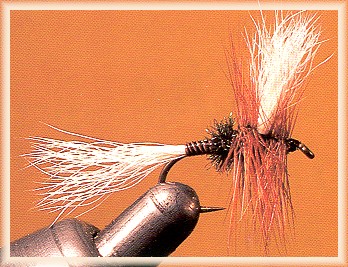 H and L Variant |
|
|
MaterialsHook: Standard dry fly, sizes 16 to 10 (the hook shown is a Dai-Riki 305). Tying Steps: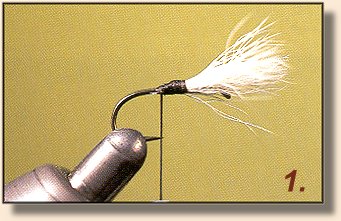
1. To best secure the wings and tail, begin with
3/0 thread. Comb, stack, measure, and then use the pinch
to tie in the wing hair. Trim the hair's butts at an angle
and bind them with thread.
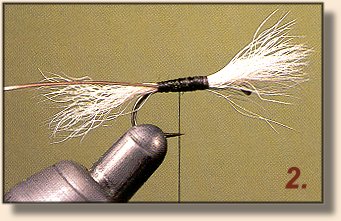
|
|
2. Comb, stack, measure, and use the pinch to tie in the tail
hair. Snip the butts at an angle and bind them with thread.
If you started with 3/0 thread, you can switch now to 8/0
or 6/0. Strip a peacock quill, tie it in, and wrap it up
one-quarter of the shank. Secure the quill with thread; trim
the quill.
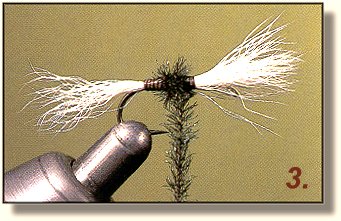 3. Tie in a peacock quill (unstripped) near its tip, spin the quill and thread together to reinforce the quill, and wrap this thread-quill rope up one-quarter of the shank. Secure the end of the quill under thread turns and trim the quill.
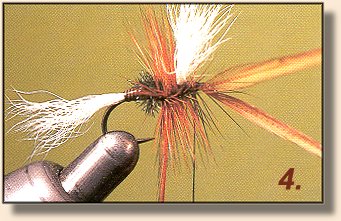
|
|
4. Set the wings upright, securing with thread. Tie in three
hackles (two is acceptable, but I prefer three, especially for
hook sizes 12 and larger). One by one, wind each hackle, secure
its tip with thread turns, and trim its tip.
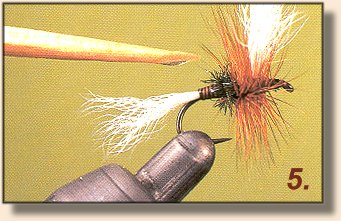 5. Build and whip finish a thread head. With the sharp point of a round toothpick (or similar object) add head cement to the quill body and the thread head. ~ Skip Morris
Fishing the H & L VariantThe H & L was designed as a rough water fly, one that would not sink, and still be visible on fast water. It is fished as a dry fly, upstream or quartering upstream, mending line to obtain the longest possible float. DLBCredits: From the Art of Tying the Dry Fly by Skip Morris, published by Frank Amato Publications, Inc. We greatly appreciate use permission. |
|
For more great flies, check out:
Beginning Fly Tying,
Intermediate Fly Tying and Advanced
Fly Tying.
|